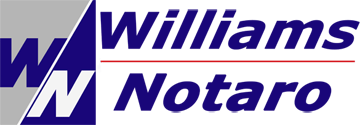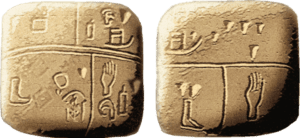While working at San Jose State's Career Center, in the heart of Silicon Valley, at a very technically competitive time, I would have to argue with engineering students to turn in neat, presentable, error-free, well-written, and grammatically correct resumes and cover letters. Their response was always the same, “I am going to be an engineer; I don’t need to know how to write!”
Unfortunately, this was the prevailing attitude of many engineering schools, programs, and students for many years. In 2001, however, ABET (the Accreditation Board for Engineering and Technology) set in place standards for engineering programs that attempted to address the need for proficient writing skills, as well as expert technical skills, for engineering professionals. While this change may have affected the teaching of writing skills in engineering programs, and improved the basic writing abilities of engineers overall, it has definitely not altered the grimace on the average engineer’s face when tasked with any writing project.
The concept of writing was both conceived and developed in ancient Sumer (in Mesopotamia) around 3100 BC and is known as cuneiform. It is distinguished by wedge-shaped marks made on clay tablets with a blunt reed used as a stylus. Ironically, and likely, from today’s vantage point, writing was probably conceived and developed by ancient “engineers” looking for better ways to communicate and record knowledge and information. It was not the act of writing itself that brought about this invention, but rather the act of providing solutions for a need to communicate findings; to record the known and the unknown. These crude forms of writing allowed our ancestors to pass on ideas, observations, and information from a specific time and place in the past; a way of saying, “We were here and we did this."
So, why the grimacing faces at writing tasks? Well, engineers prefer to live and work in the technical world, solving problems with calculations and designs, and rightfully so. Engineering is, after all, about design, fabrication, and testing of processes and devices. To do this repeatedly and consistently, however, an engineer must also know how to write, and to write well. Today’s engineer must be able to effectively and concisely document important, complex technical details in a written format that is logical and understandable. Engineers need to know how to present and explain their ideas and solutions to other engineers, architects, contractors, building owners, property managers, and tenants. Good writing is necessary to communicate in a manner that can be understood by a wide range of potential audiences. Being able to explain succinctly the whys and hows of a design demonstrates knowledge and expertise; it allows the engineer to build trusting relationships with clients.
Project Engineers and Project Managers might spend up to 50% of their time writing and communicating. They write internal memos, emails, proposals, RFP’s, letters, technical blogs and technical reports and papers. In addition, they might be called upon to give briefings to clients with a written summary or prepare materials for seminars or trainings for specific topics. Regardless of the reasons, engineers must know how to communicate in writing and a basic writing/technical writing course taken in college is probably not enough. So, how do engineers acquire effective writing skills?
There are two overarching strategies that can guide any engineering firm to strengthen the writing skills of their engineers. First, is the understanding of the writing tool called "scaffolding". Scaffolding is the process of moving through a series of ordered steps to develop a piece of writing. This practice is very similar to the engineering processes of preparing punch lists, site visit reviews, proposals, evaluation reports, client progress reports, or technical reviews. Scaffolding is a systematic building process of steps from start to finish; it is a step-by-step process that provides the writing-shy engineer with sufficient guidance until the process is learned and writing becomes comfortable and second nature.
Next, is understanding the power of peer review. This process is also a familiar tool used by engineers. It is found in negotiating proposals and contracts, writing and responding to submittals, reviewing engineering packages, and writing technical articles and blogs. A draft is written and then sent out to solicit comments. The comments are then incorporated into the final draft. This is "process writing" and is similar to peer reviews or permit reviews of designs. One note of caution - this is a writing process and not a proof-reading process. Writings submitted for peer review are intended to solicit feedback, questions, and ideas. Errors should be pointed out, and suggestions should be made for improvement. Peer reviewers are not proof-readers; they are content reviewers looking for clarity, knowledge, and writing flow.
Most engineers will be called upon to produce technical documents. The technical writing process is more succinct than a basic writing process. The technical writing process is about how to apply writing and project management skills to the task of producing high quality technical documents. The technical writing process includes five steps: planning, structuring, writing, reviewing, and submitting. While technical writing assignments may differ, all technical writing will have these five steps in common. I encourage the use of this step-by-step process to improve the skills of all writers of technical documents.
The Technical Writing Process
- Planning - just like design projects, all writing projects must be planned. When planning to write technical documents, consider these questions.
- Scope - What are the # of documents to be written?; What are the requirements of each?
- Timing - How much time do I have?
- Process - What is the step-by-step process?
- Audience - Who will read this?
- Reviewers - Who will review this?
- Structuring - What will the final document look like?; What format?
- Writing - Learn to: use plain English, keep it simple, use five W's (who, what, where, when and why) and only one H, use appropriate verb-noun structure, write in the active voice. (If you are unfamiliar with these writing techniques, get a good book and learn)
- Reviewing - The review process can take many forms and have more than one step. There is the review of subject matter (the technical review), peer reviews by colleagues, and then there is the editing and proof-reading. The most crucial part of the review process is the sign-off; the point where the writer and the reviewers are completely satisfied with the final product.
- Submission - the launch of the final product.
Written communication is the most common form of all business communication. It is essential for business owners and managers to develop effective written communication skills and to encourage the same in all employees. Finding the commonality with quality engineering process and quality process writing is a great place to begin to improve the writing attitudes and skills of engineers and then followup with a company writing procedure.



